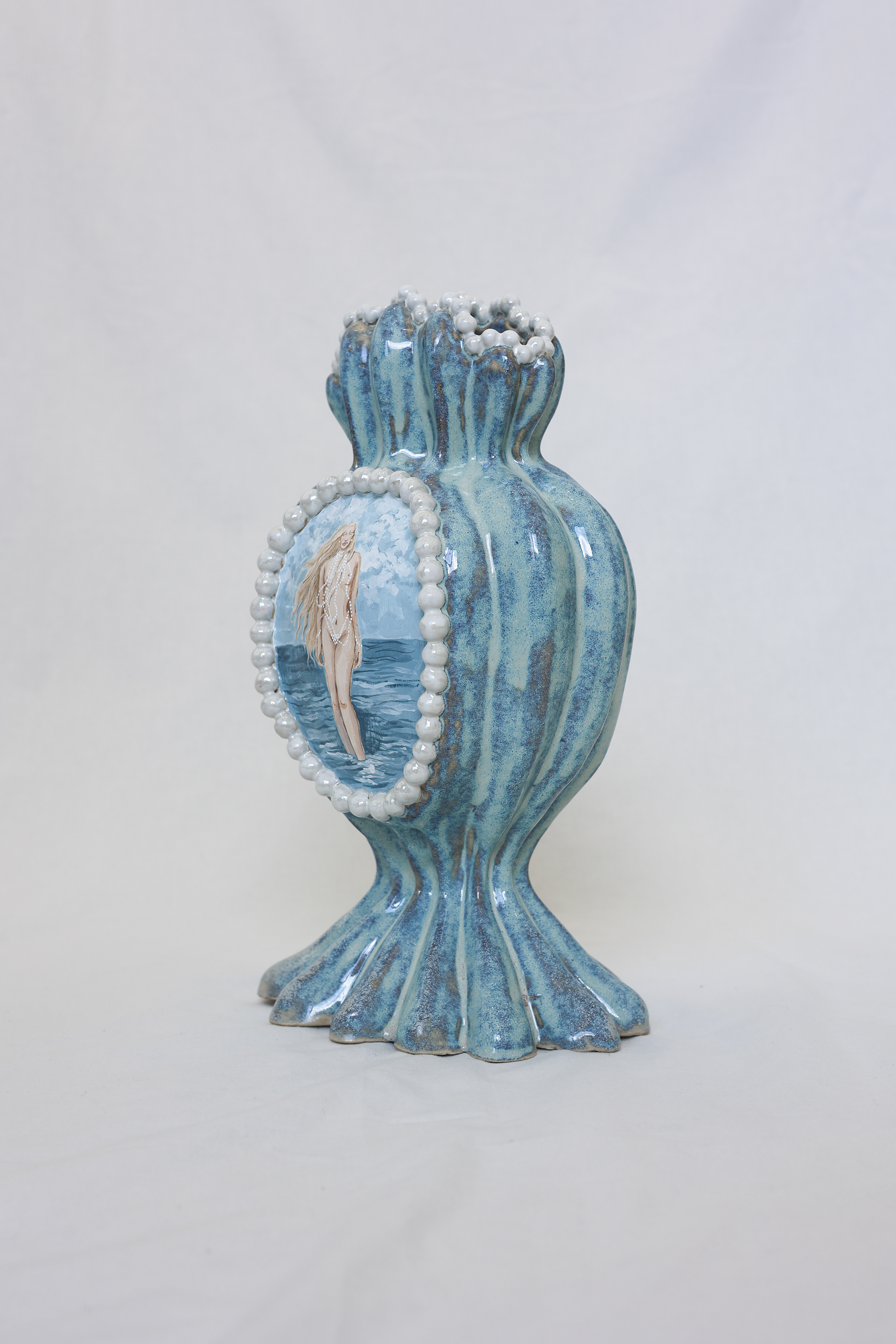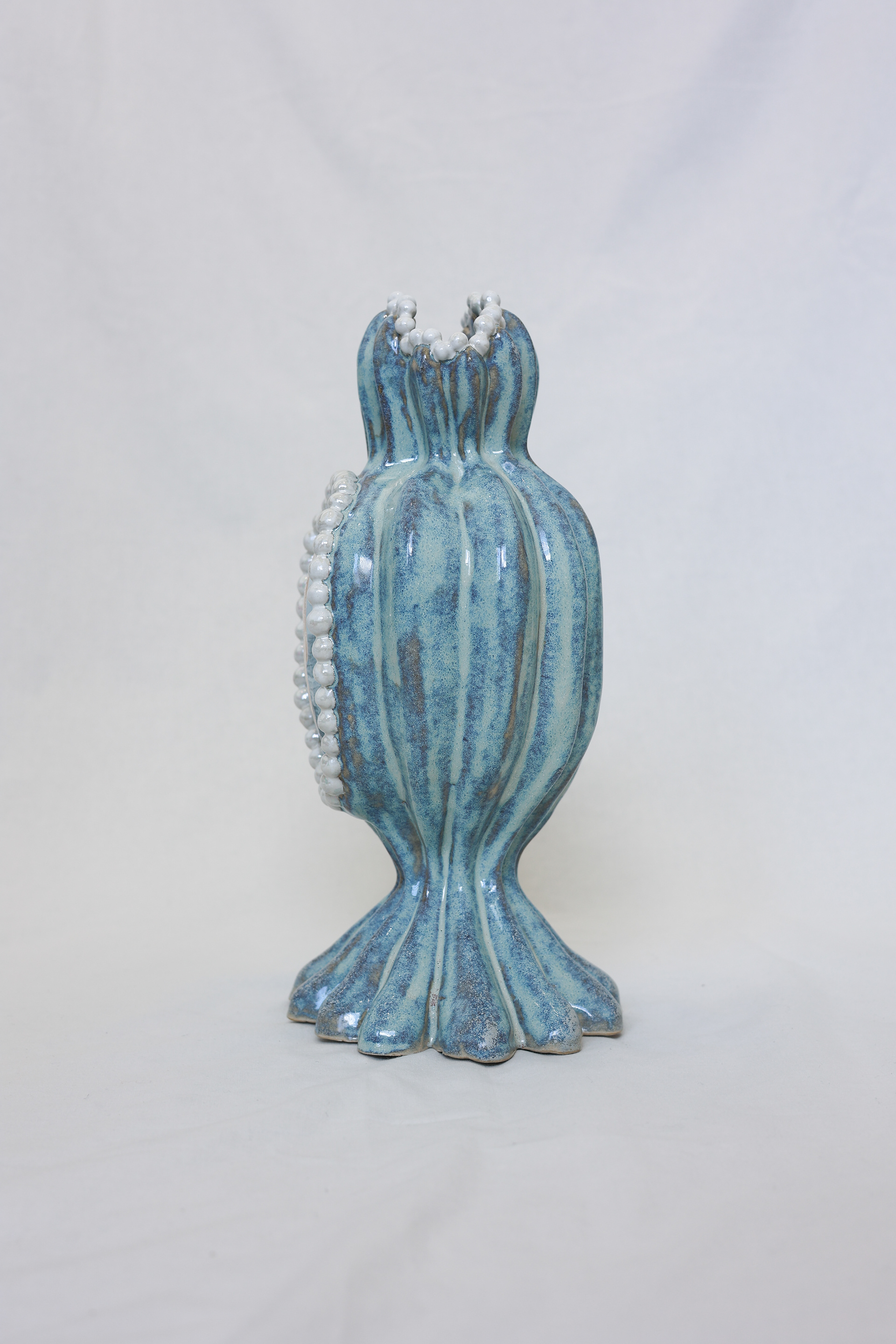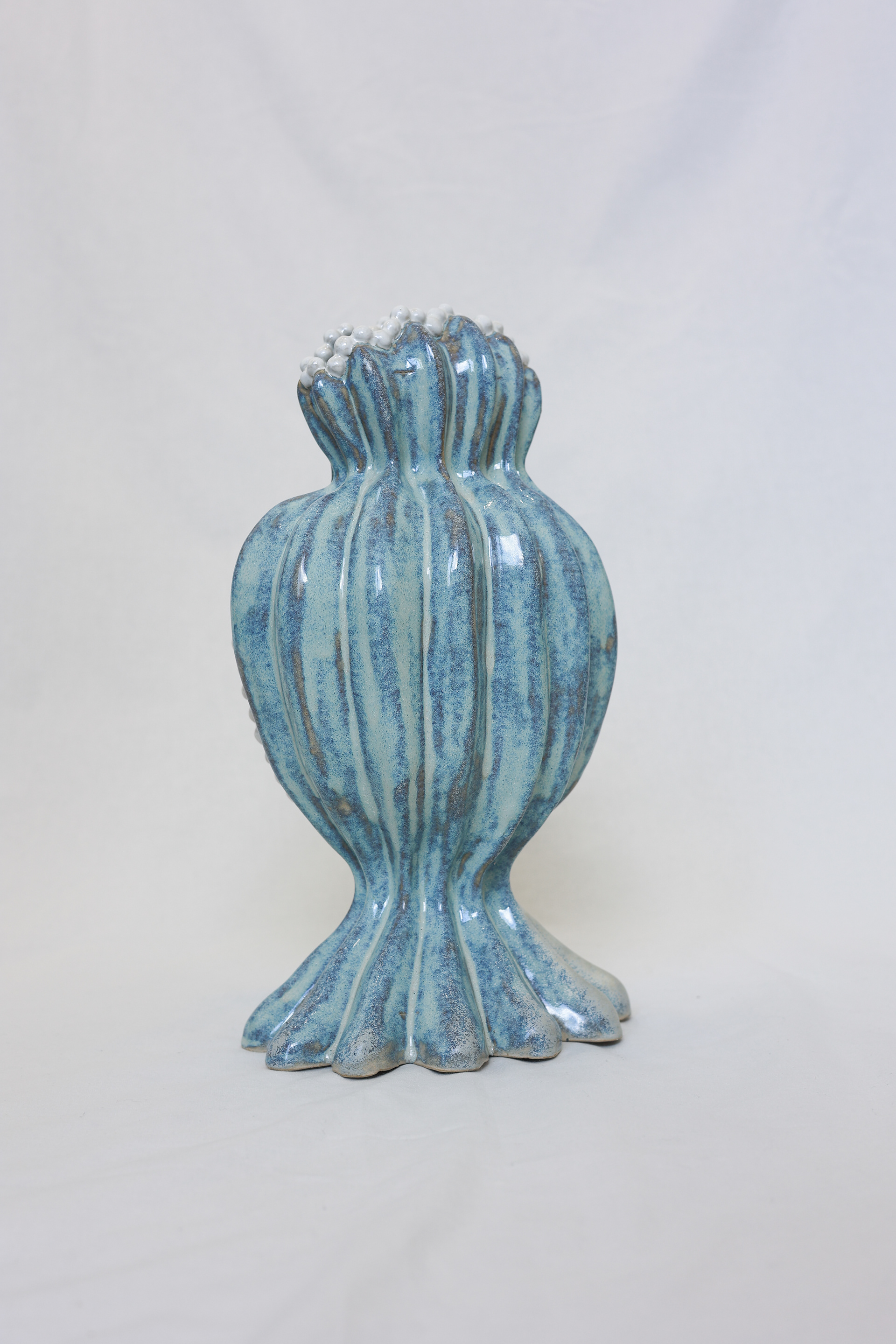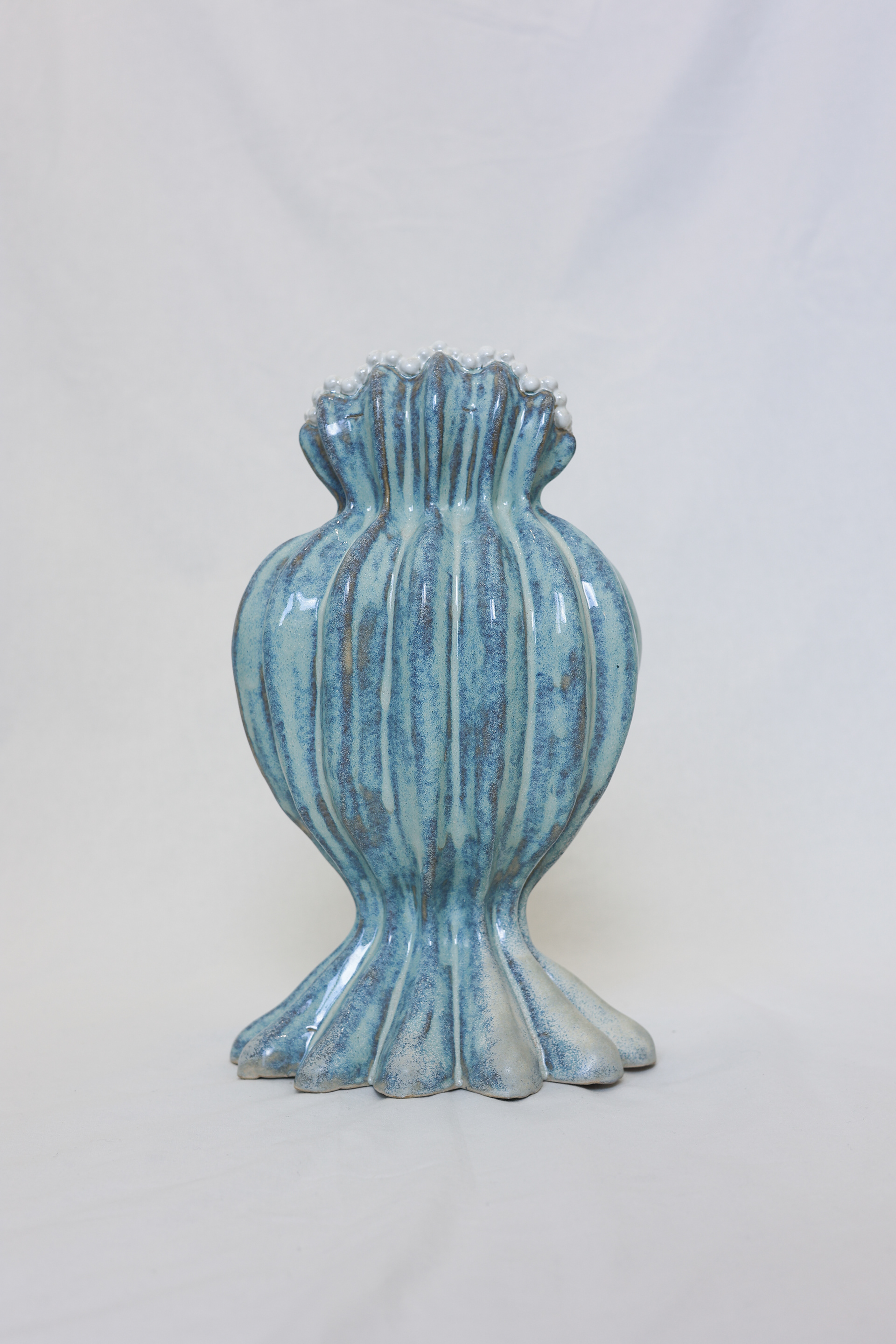Artificiata is a collection of five ceramic sculptures that were inspired by Cabinets of Curiosities from the 16th, 17th and 18th century. Cabinets of Curiosities, or Wunderkammers, were the frontrunners of museums. During the Renaissance, trade made the economy bloom. The growing wealth and interest in science and art, created a passion for collecting. The treasures were presented (and shown off) in a cabinet or special room. The objects in Cabinets of Curiosities can be divided into four groups: Naturalia, Exotica, Scientifica and Artificiata. Artificiata are wondrous man-made objects or art pieces - and they inspired this exhibition.
© Annegien Schilling
This exhibition is on show at the EXboot, de Nijverheid in Utrecht, from the 5th till the 28th of July.
© Annegien Schilling
The River Of Blood Never Runs Dry
I remember sitting in history class and seeing videos and pictures of the Americans freeing concentration camps at the end of the Second World War - it almost made me puke. The things they found were unspeakable. I couldn’t understand how the Nazis were capable of such deeply cruel acts - how they dehumanized the victims of the Holocaust so extremely, that they were able to treat them like animals. The horrors of the Holocaust shocked the whole of humanity, and the only plus side was that we agreed that it would never. happen. again.
I grew up in peace, and was naive enough to think that we had learned from the Holocaust and humanity wouldn’t repeat its mistakes, but the terrible war in Gaza has made me realize that the opposite is true. Yet again, I’m seeing videos and pictures of unspeakable things: a crying man holding a headless baby, a soldier laughing after he blew up a hospital. Yet again, people are being treated as (less than) animals. And the worst part is that there are countless wars that aren’t making headlines, so much cruelty that nobody sees, with no chance of justice.
Just like so many people, I feel powerless. I don’t think the cycle of hate will ever stop. After all, how could you forgive someone who cold-heartedly murdered your loved ones? Wouldn’t you want to hurt them too? I am trying to be hopeful but maybe the best thing to do is to accept the heartbreaking truth: War is a rotten, fundamental part of humanity.
If this vase is sold, 50% will go to Plant Een Olijfboom to help the people in Gaza.
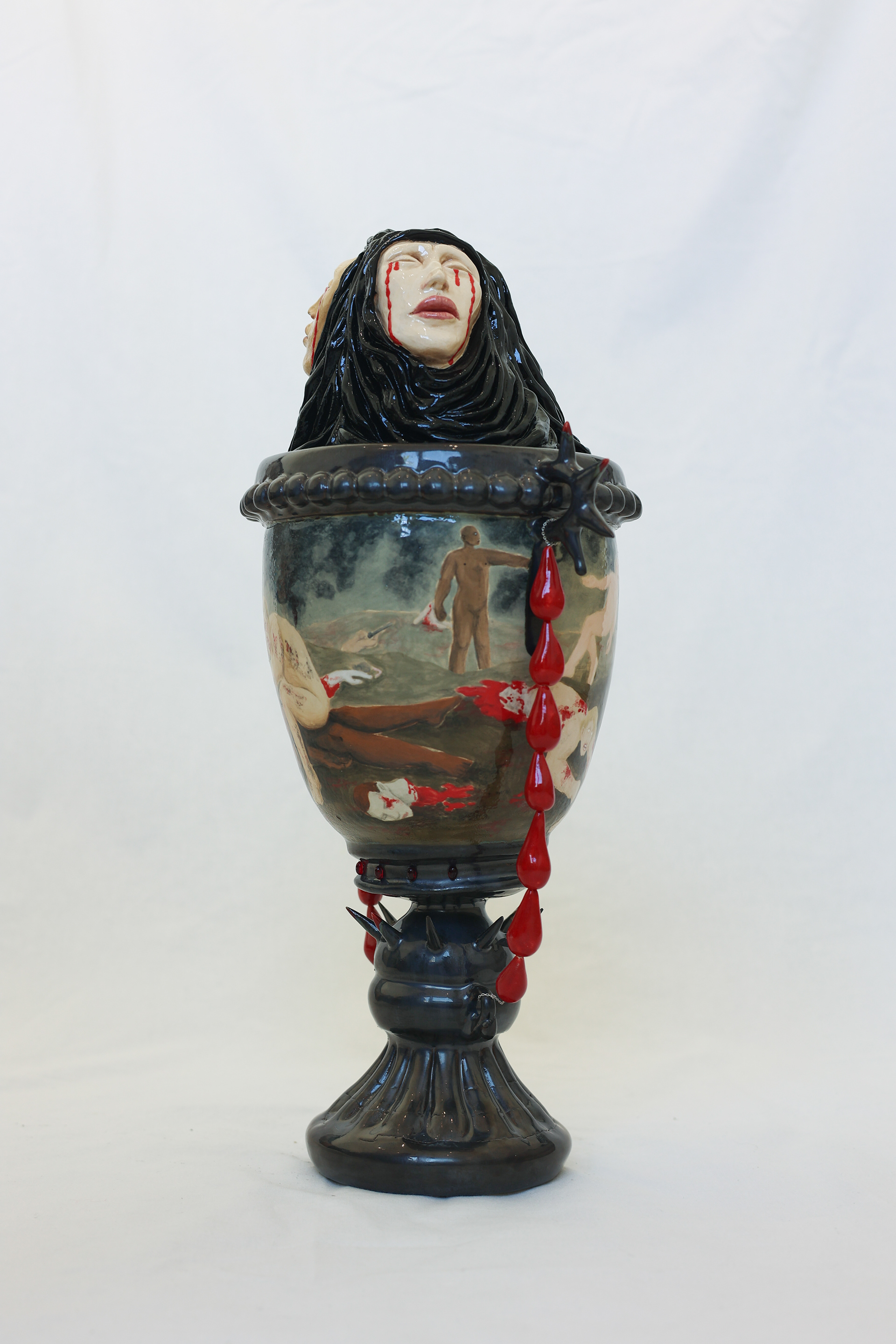

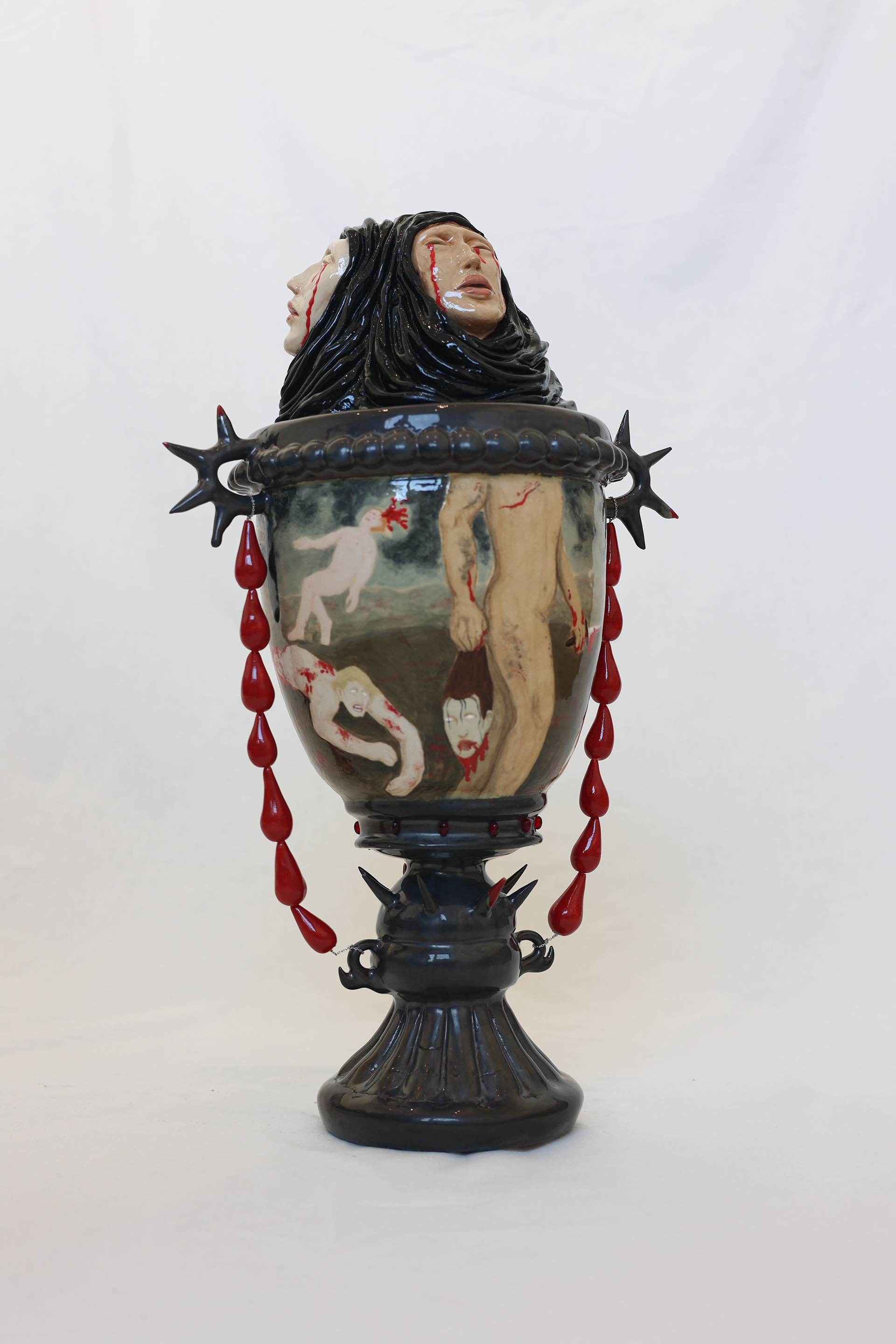
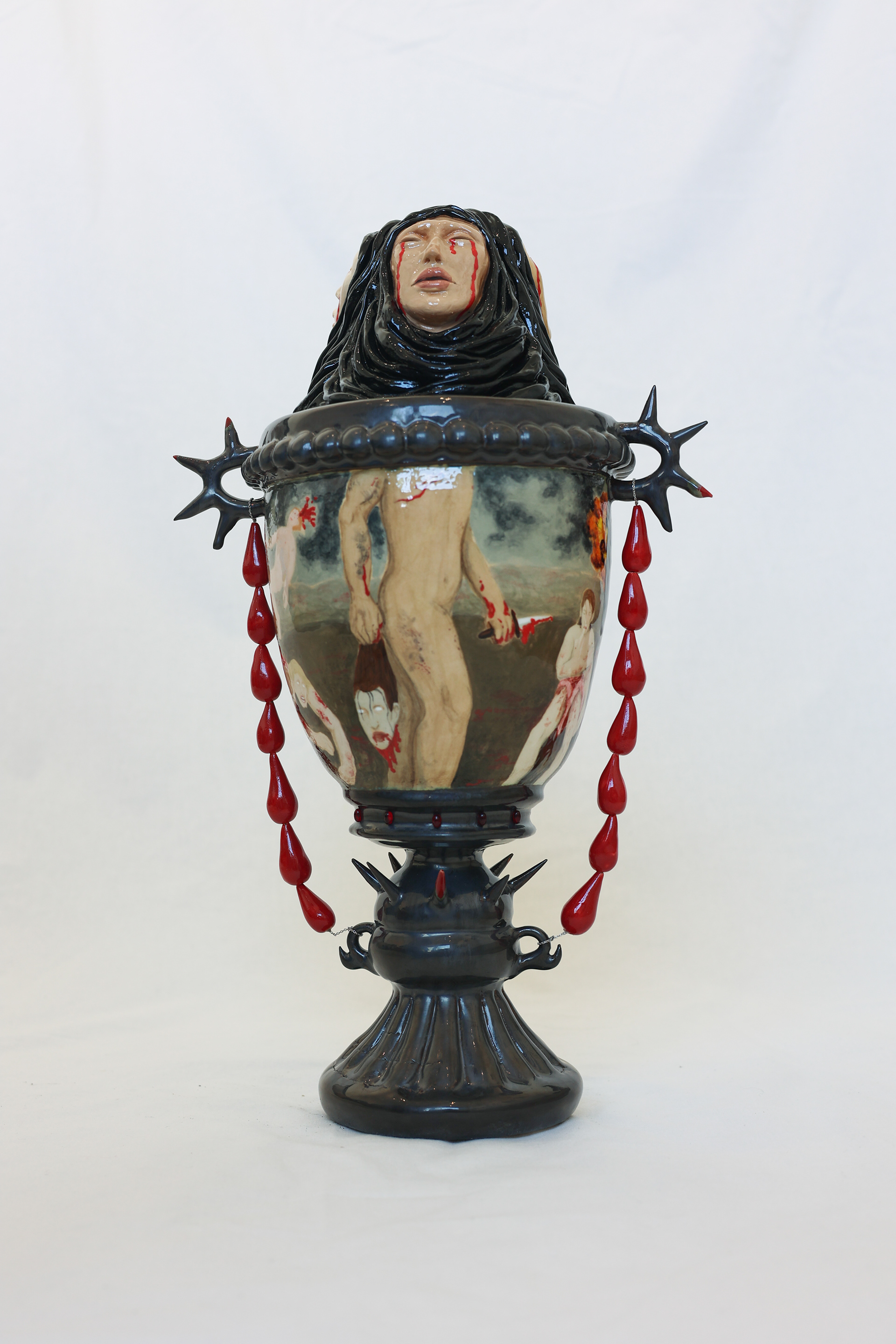




© Annegien Schilling
1988
For the people who don’t recognize this wondrous figure, let me introduce you to the clitorus in its full glory. In 1998, Australian urologist Helen O’Connell studied the clitoris and discovered that it was 10 times bigger than everyone had originally thought. The little bulb is just the tip of the iceberg, most of the organ - which has two to three times as many nerve endings as the penis - is underneath the surface. And its sole purpose? Pleasure.
Isn’t it painful to realize that such a discovery was made only 26 years ago? To be fair, it has been speculated throughout history that the clitoris was a bigger organ, but that knowledge was never deemed important enough for it to stay in the collective memory. It is a shameful reminder of the sexist bias in science and medical care, not to mention the lack of study on female pleasure.
After not being appreciated for so long, this clitoris finally gets the spotlight it deserves. It is rising above its history, signified by the pedestal with engravings of its past names. Viva la clitty!
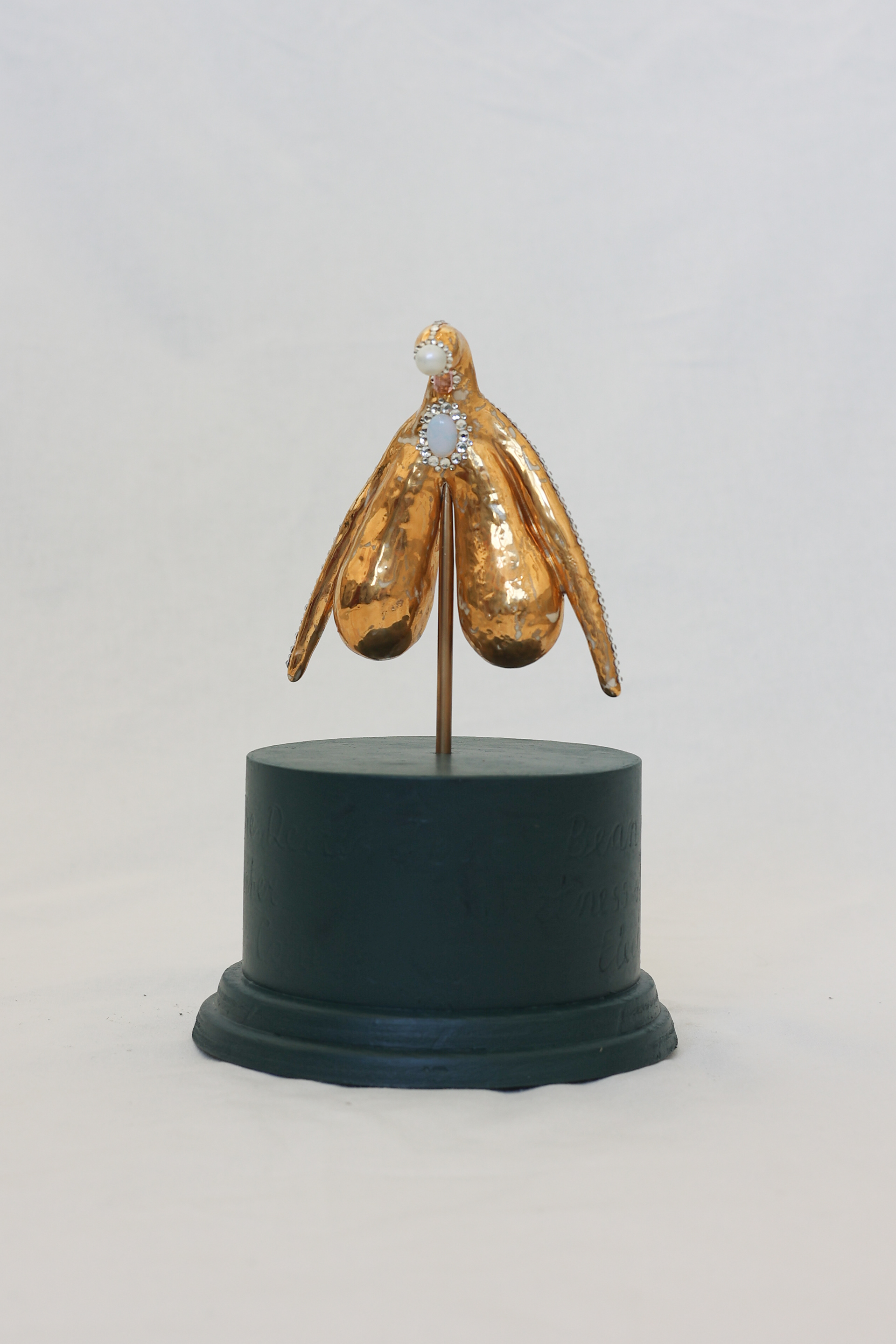
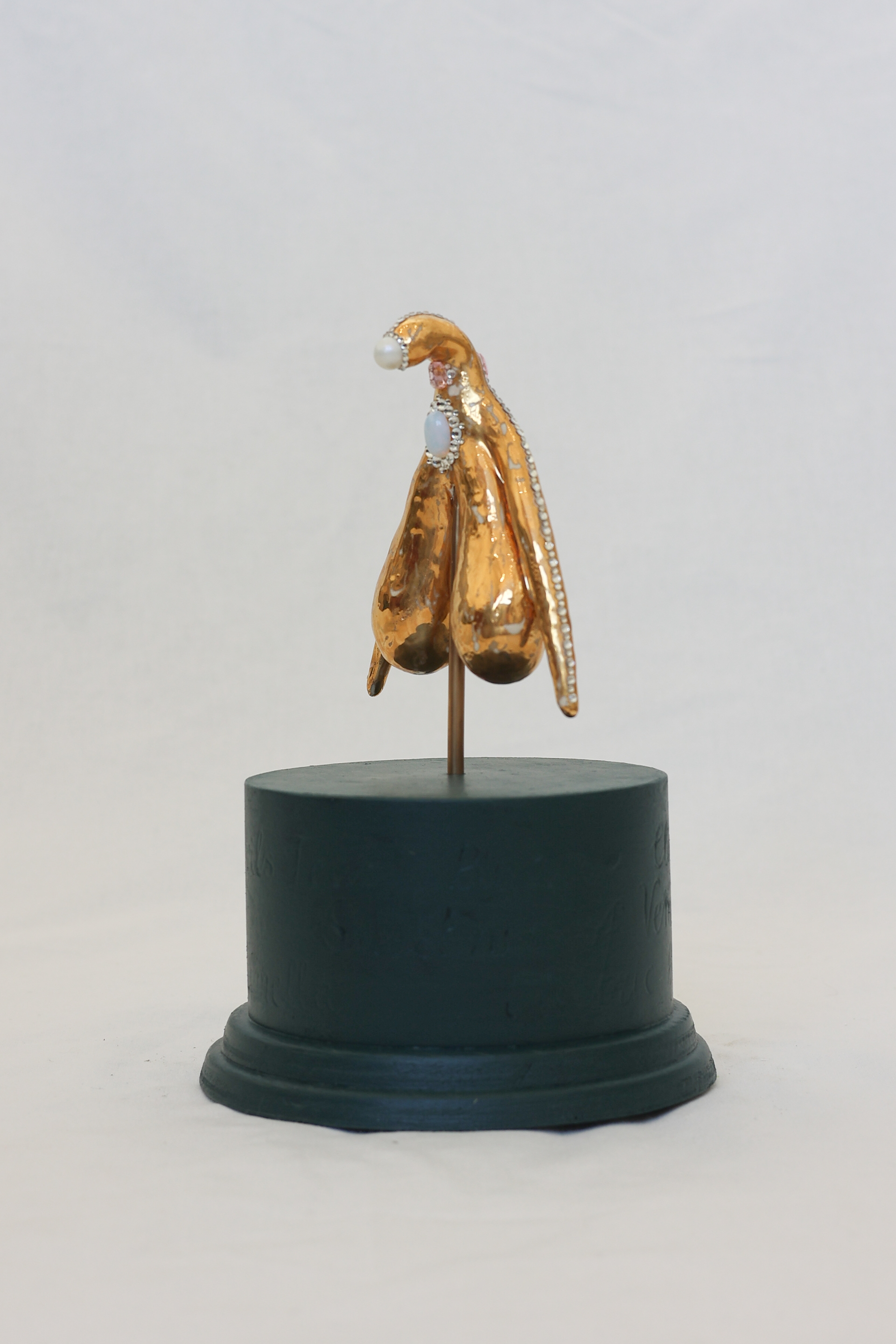
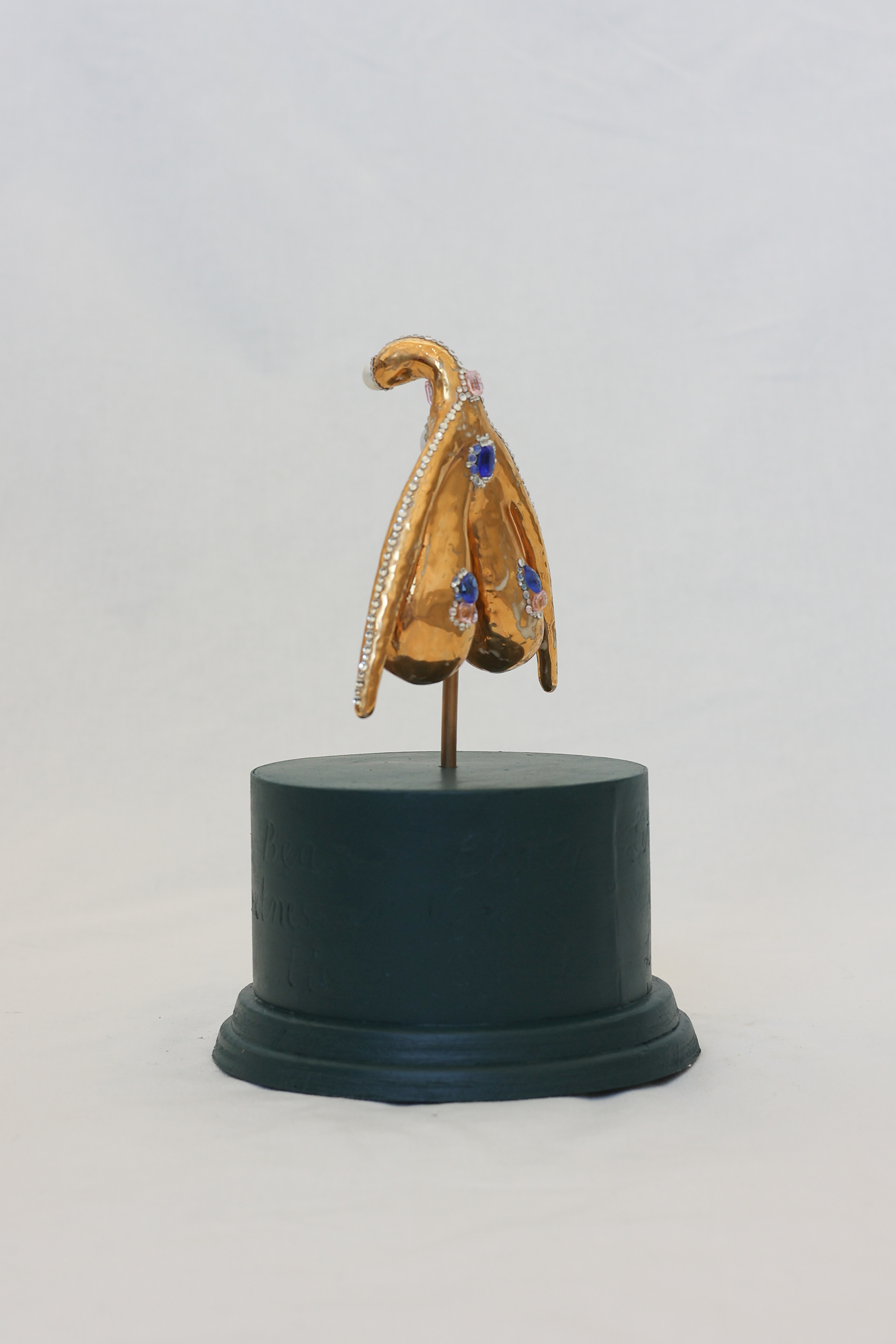
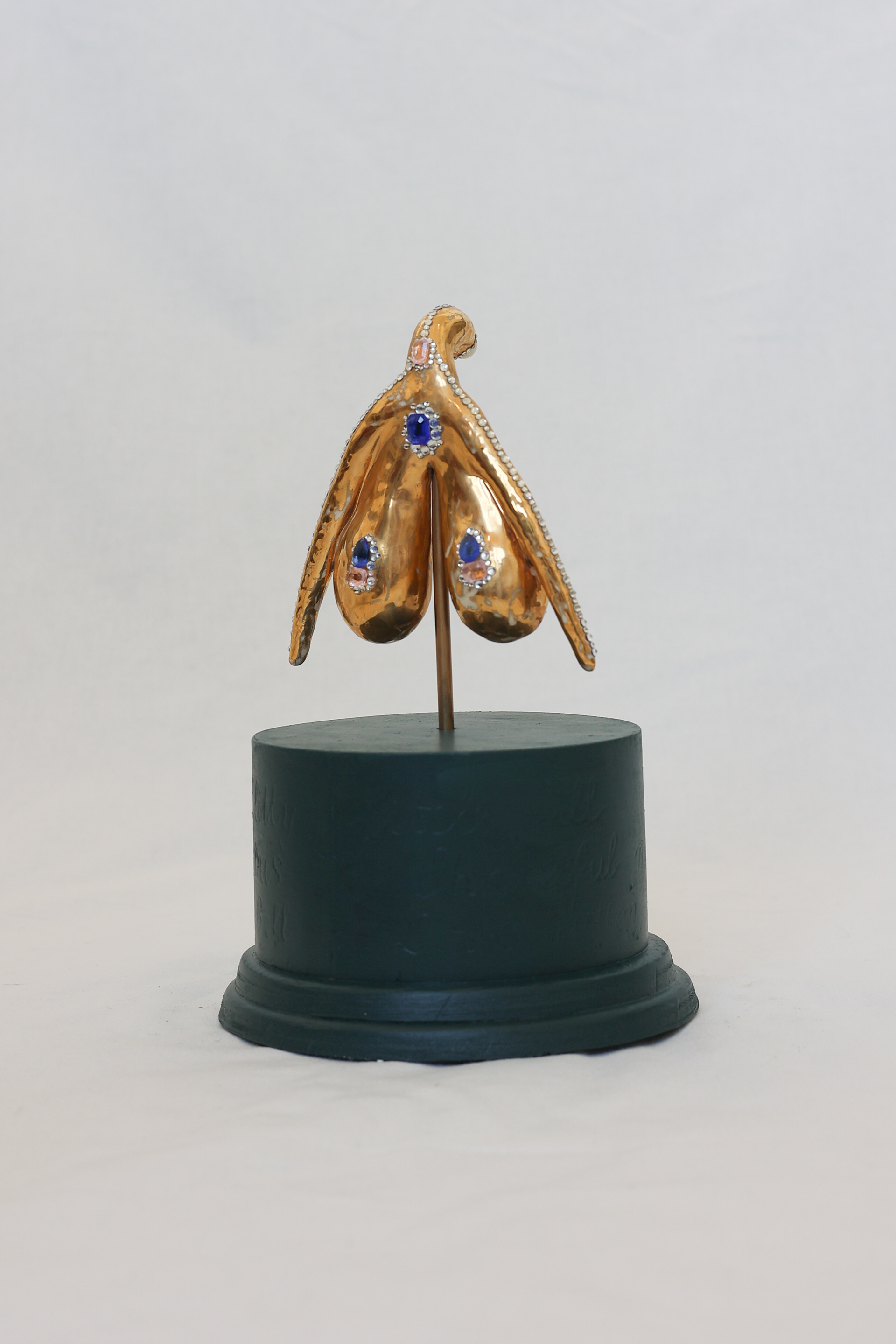
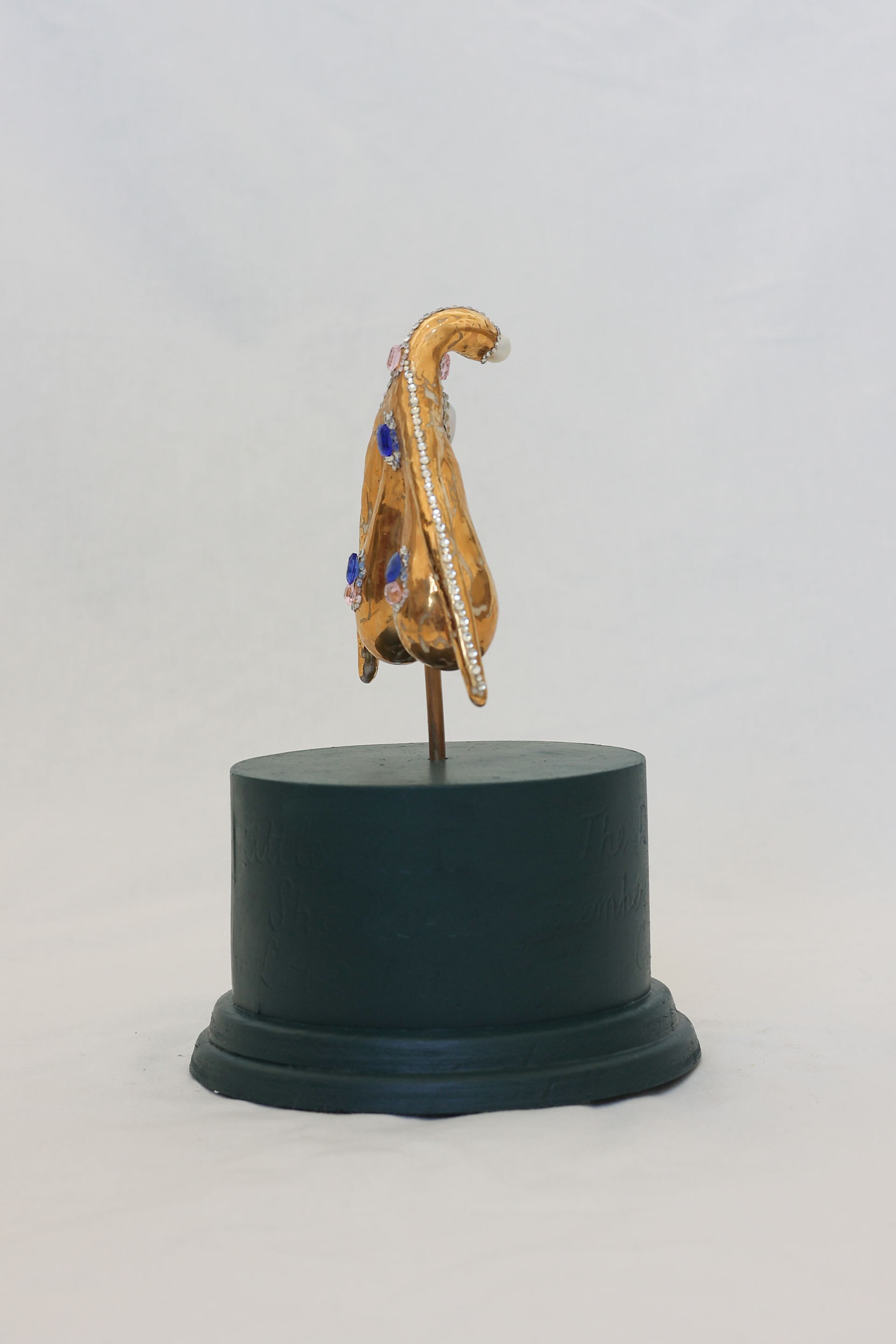

© Annegien Schilling
Daphne
Blood coral is a staple in Cabinets of Curiosities. These beautiful dark orange branches were carved, used in jewelry and incorporated into decorative art. One of my favorite examples is the Daphne statue from the Green vault in Dresden. The statue is based on the Greek myth of Daphne and Apollo, in which the nymph turns into a tree to save herself from the god’s attempt to rape her. If you look in Massimo Listri’s photobook Cabinet of Curiosities, you can see how Daphne is in the middle of her transformation, and how they elegantly used blood coral as tree branches.
This charming statue inspired me, and made me think of the differences between 1586 (when the work was made) and our time. During the Renaissance, a growing interest in science made people look differently at the nature around them. Coral was collected enthusiastically, as it was seen as a wonder of our natural world - and rightly so. Colorful coral reefs can enchant anyone with their beautiful, peaceful and other-worldly appearance. How cynical though, to know what would be left of those ‘rainforests of the sea’ 500 years later.
Since the beginning of 2023 and through mid-May 2024, mass coral bleaching has been confirmed in at least 62 countries and territories worldwide. Bleached coral can still recover, but it takes a minimum of ten years and requires the temperatures to drop. Coral, one of the most vital parts of the ocean’s ecosystem - and thus, our planet, is dying.
So this is my modern-day Daphne, with branches made of dead, bleached coral. I think we can all agree that the living coral we still have left, should remain in the ocean.
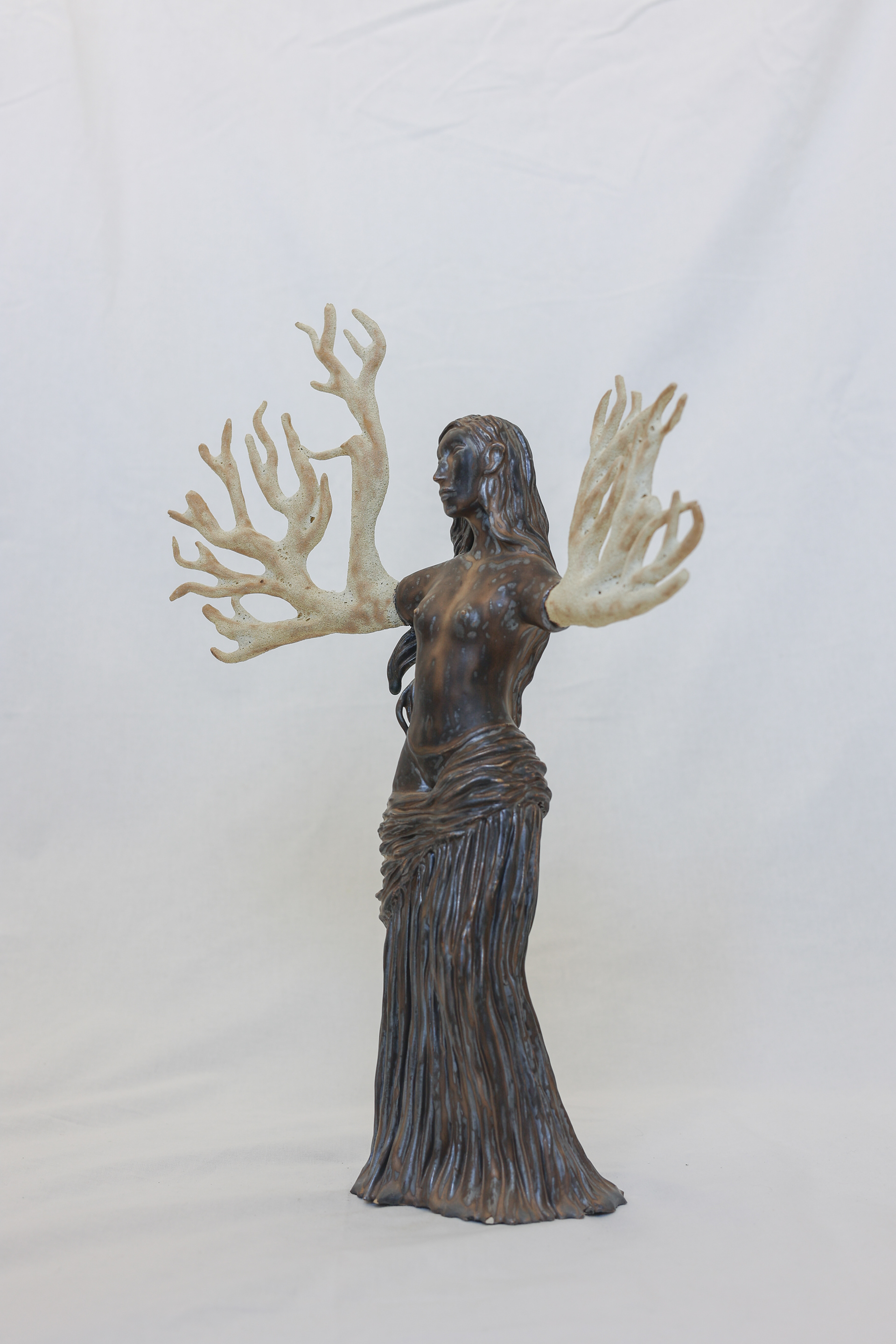

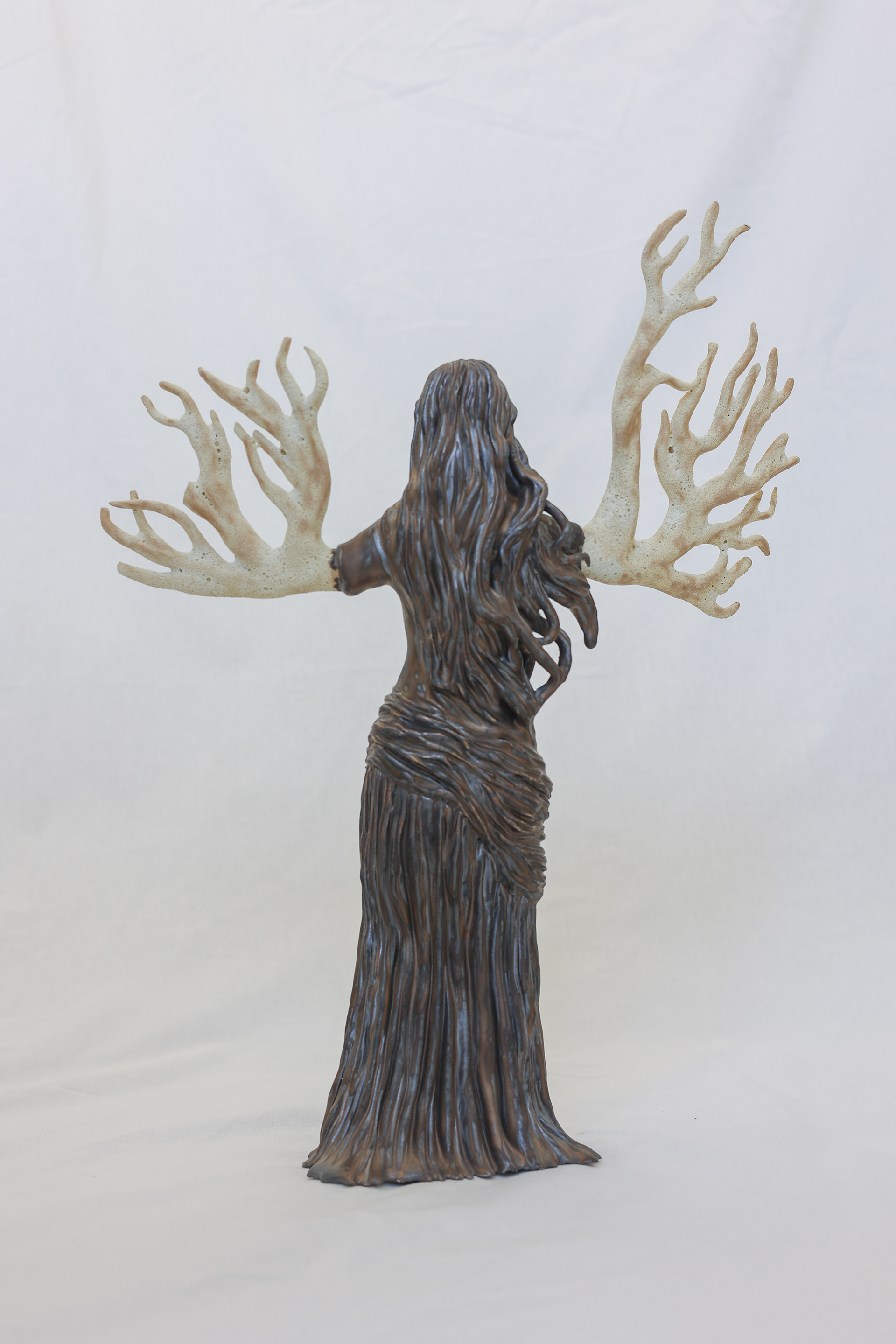
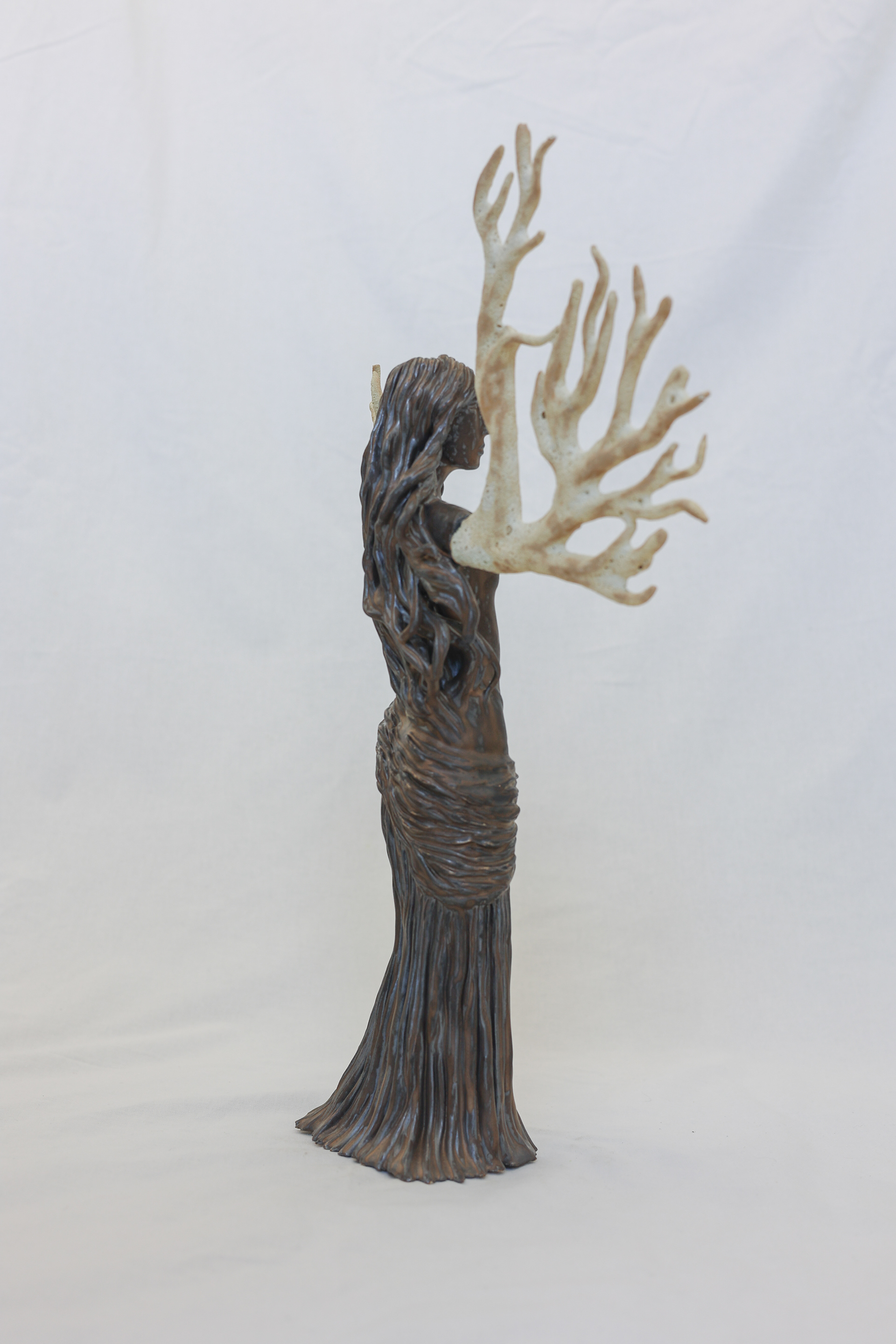
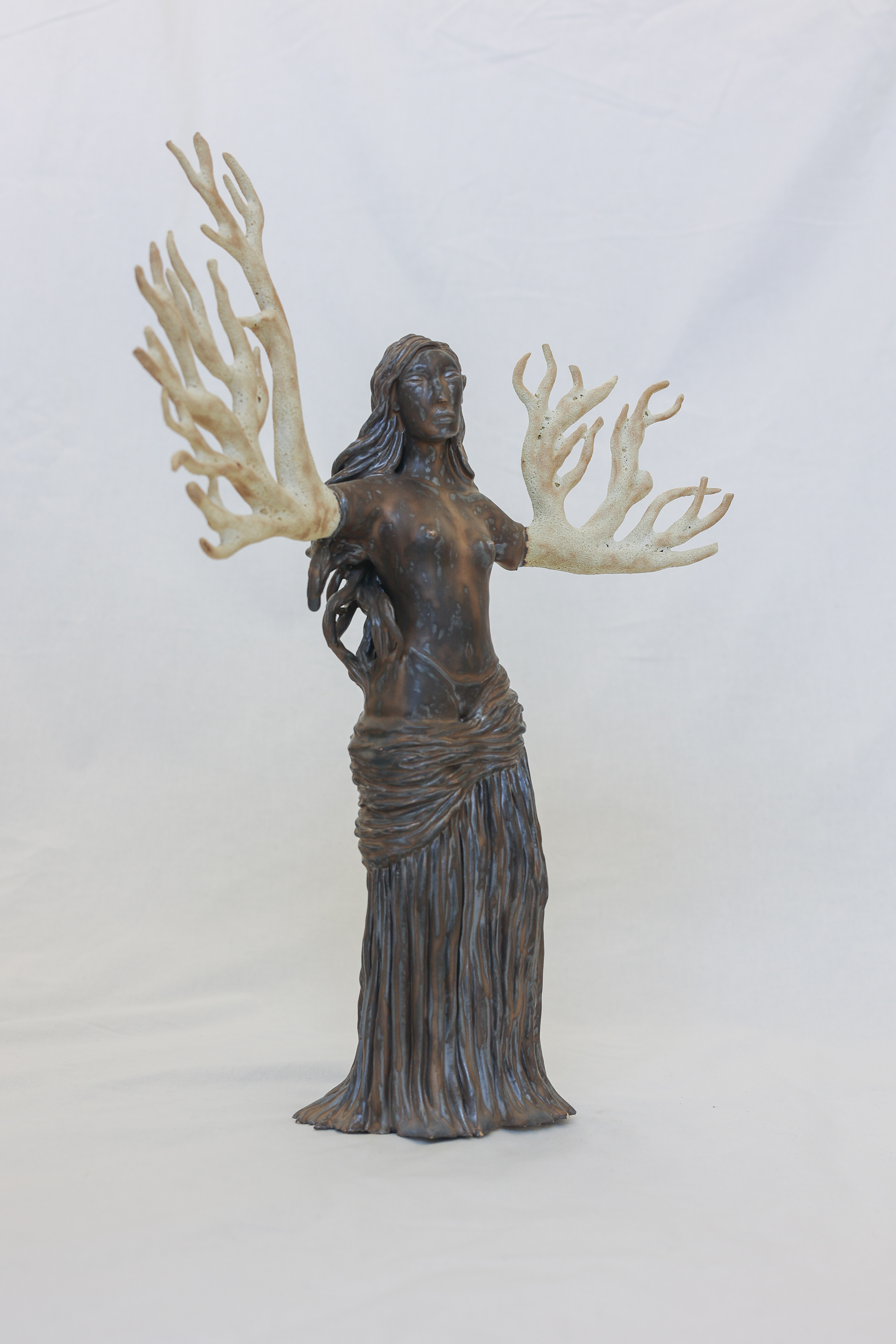
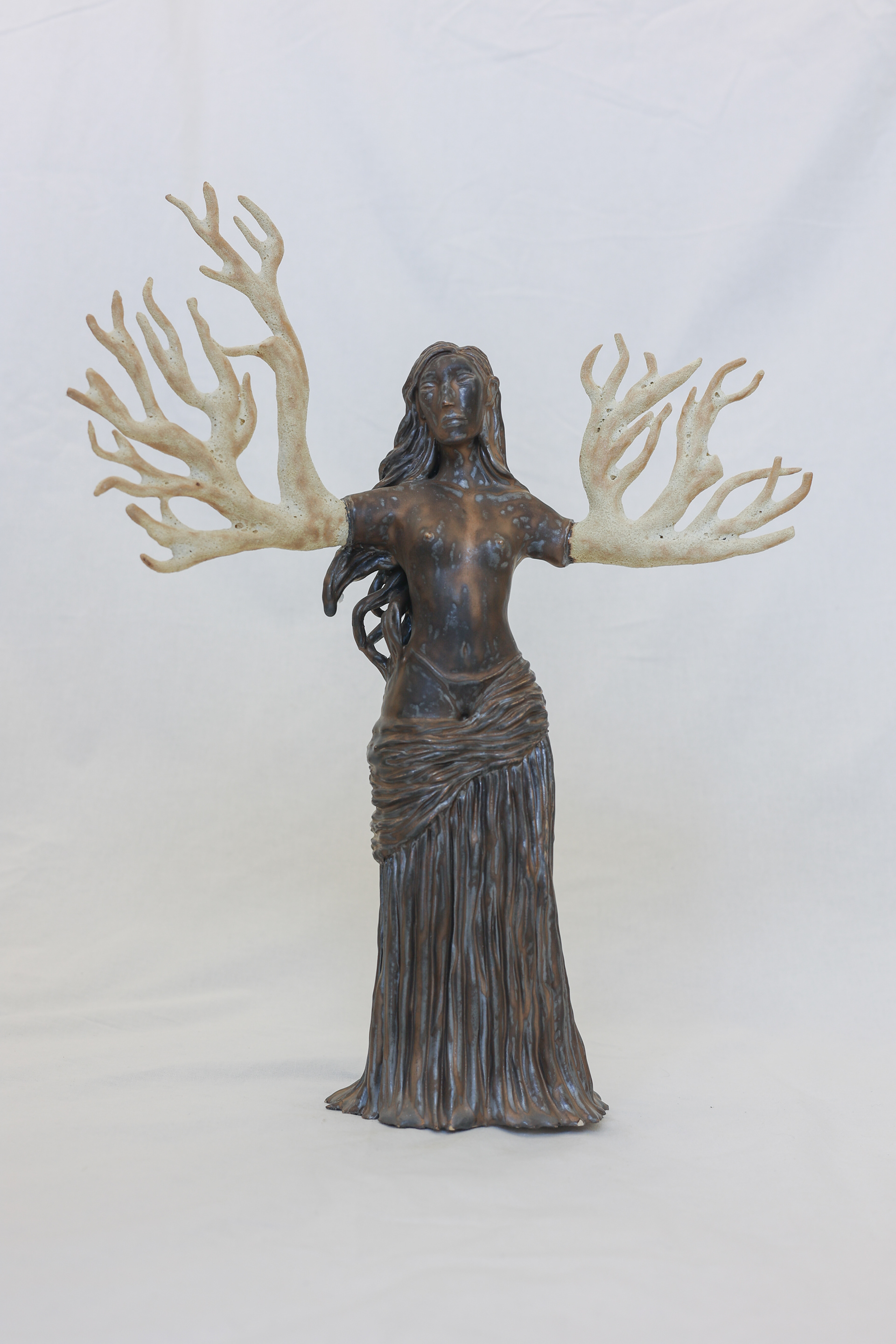
© Annegien Schilling
I Will Learn To Love My Wrinkles
One of the objects you will often find in a Cabinet of Curiosities is the Nautilus Cup. It is a nautilus shell which has been put on a silver or golden foot, and has been embellished with even more silver and gold. Even though the cups are sometimes based on a myth or a religious story, they don’t have a particular meaning or use - except for the owner to show off their wealth.
I love senseless opulence, but I did want my Nautilus Cup to have meaning - to become a trophy. My Nautilus Cup was inspired by an insecure period I had a few months ago. Even though I am often quite happy with my appearance, sometimes I get overwhelmed by the bombardment of picture-perfect girls on Instagram with their snatched faces. Suddenly I found myself looking in the mirror, pulling back the skin on my face to get rid of the lines between my mouth and cheeks, and realizing in horror - that I looked so much better.
I respect everyone’s choices regarding plastic surgery and think it is everyone’s right to do what makes them feel beautiful. But I also think it’s important to take a critical look at society’s beauty-standards, especially towards women. We are conditioned to believe that youth is beauty. We see women in the public eye painfully trying their hardest to erase any signs of aging. But isn’t there beauty in old age? In deeply engraved smile-lines, in traces of sorrow, in eyes full of wisdom and a skin that has been wrinkled by time? I know it is easy for me, and my 25-year old skin to say, but I hope I will learn to love my wrinkles.




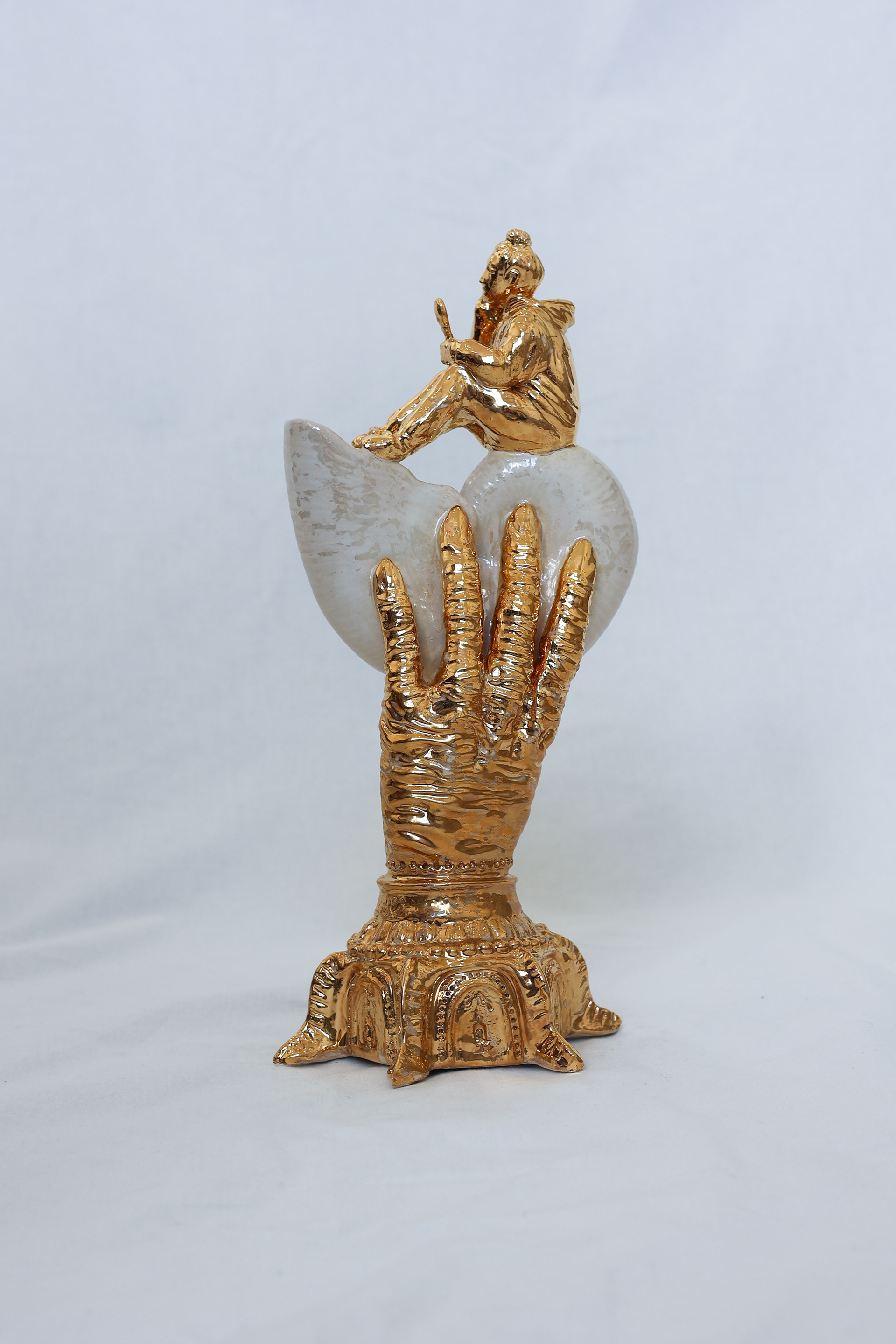



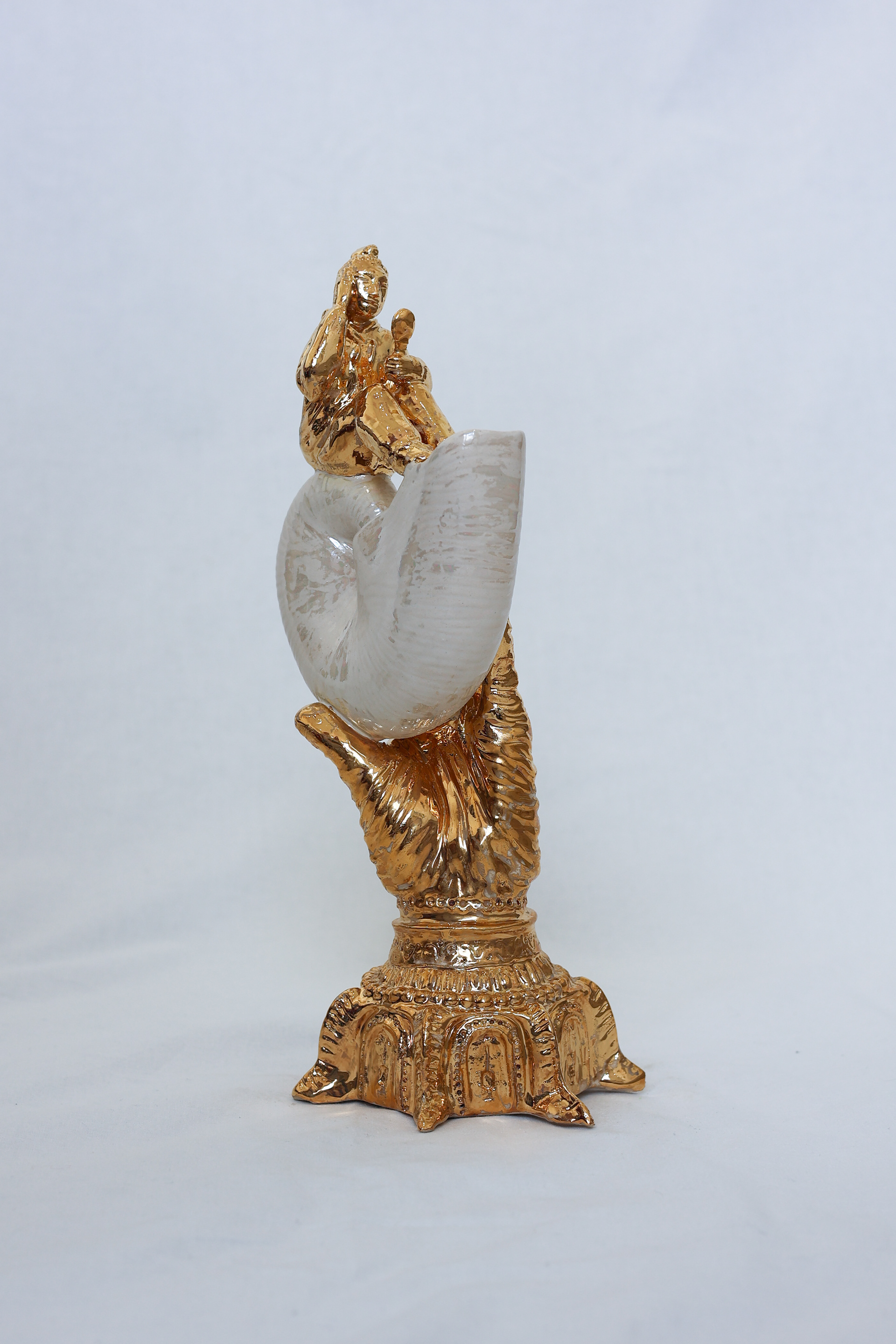
© Annegien Schilling
Love Is A Greedy Bitch
Aphrodite is the Greek goddess of love, lust, sex and beauty. She was born when the severed penis of her father, Uranos, was thrown into the ocean. She is beautiful and desired by all, but she is also selfish, vain, greedy, and arrogant. The one who has power over love, is the most powerful of them all. That’s why even Zeus, the leader of the Olympians, was afraid of her.
To me, Aphrodite is the perfect personification of the complex nature of love. Love can feel magical - like opening a shell and finding a pearl. It is the most beautiful feeling in the universe, just like Aphrodite is the most beautiful being. But she is not only the goddess of love, she is also the goddess of lust. And those two confuse and hurt each other all the time. It seems that my generation is plagued by an abundance of choices. We are so used to getting everything we want, when we want - that a collective fear of commitment is creeping up. What if there is someone better? What if I am missing out? We keep swiping on dating apps, opening shells and hoping to find more pearls as we go along. The search can be addictive and our greed is understandable… but it does seem to devalue the love we find. Anyway, it won’t matter to Aphrodite, as it is all worship to her. And she just loooves that.

